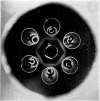Abstract
Presence of soluble immune complexes was investigated in sera from persons with a well documented clinical diagnosis of leprosy. The complexes were detected by their reactivity with the C1q component of complement.
More than 70% of the studied patients with lepromatous-leprosy had immune complexes demonstrable by this method (39/51), while only a small proportion of the healthy control group (1/35 or about 3%) had precipitable complexes. Two out of nine sera from patients with tuberculoid leprosy reacted when tested with C1q component. The presence of free-antibody to mycobacterial antigens was determined as well. The possible relationship between the presence of such immune complexes and the pathology of some reactional states of the disease is discussed.
Full text
PDF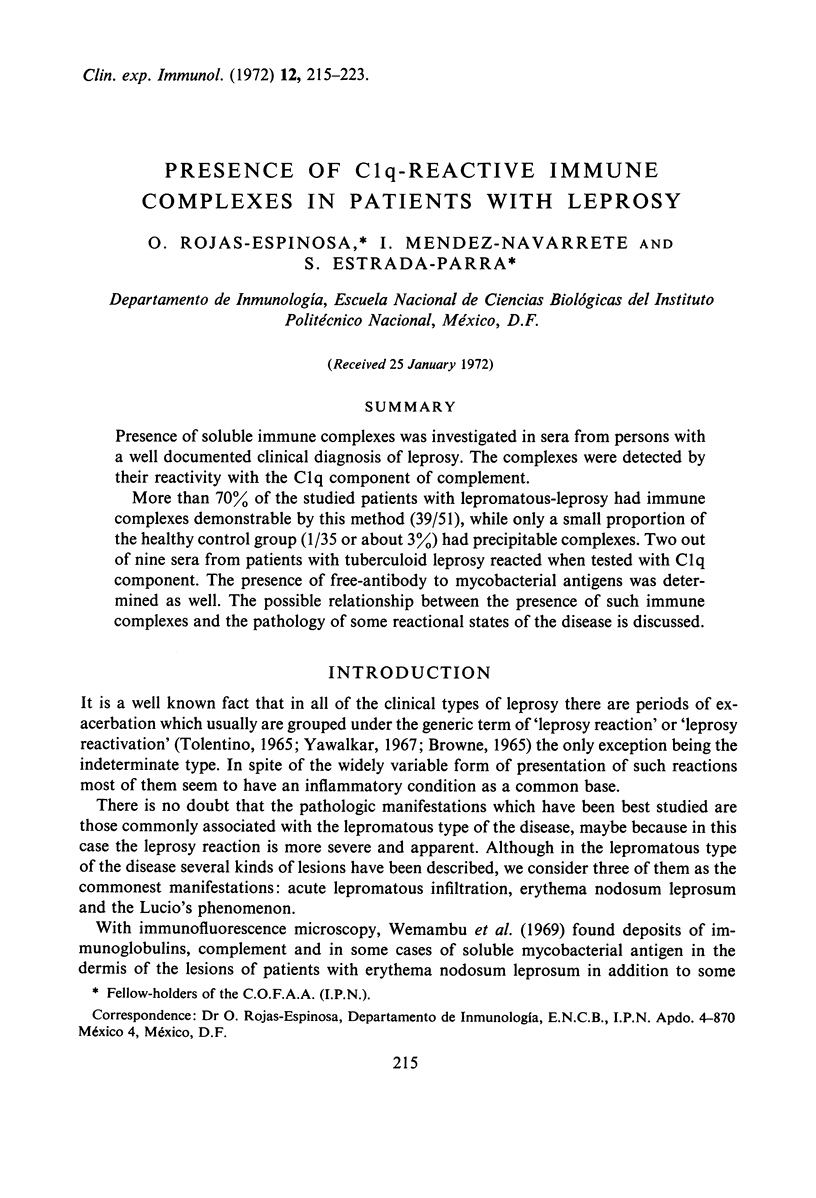
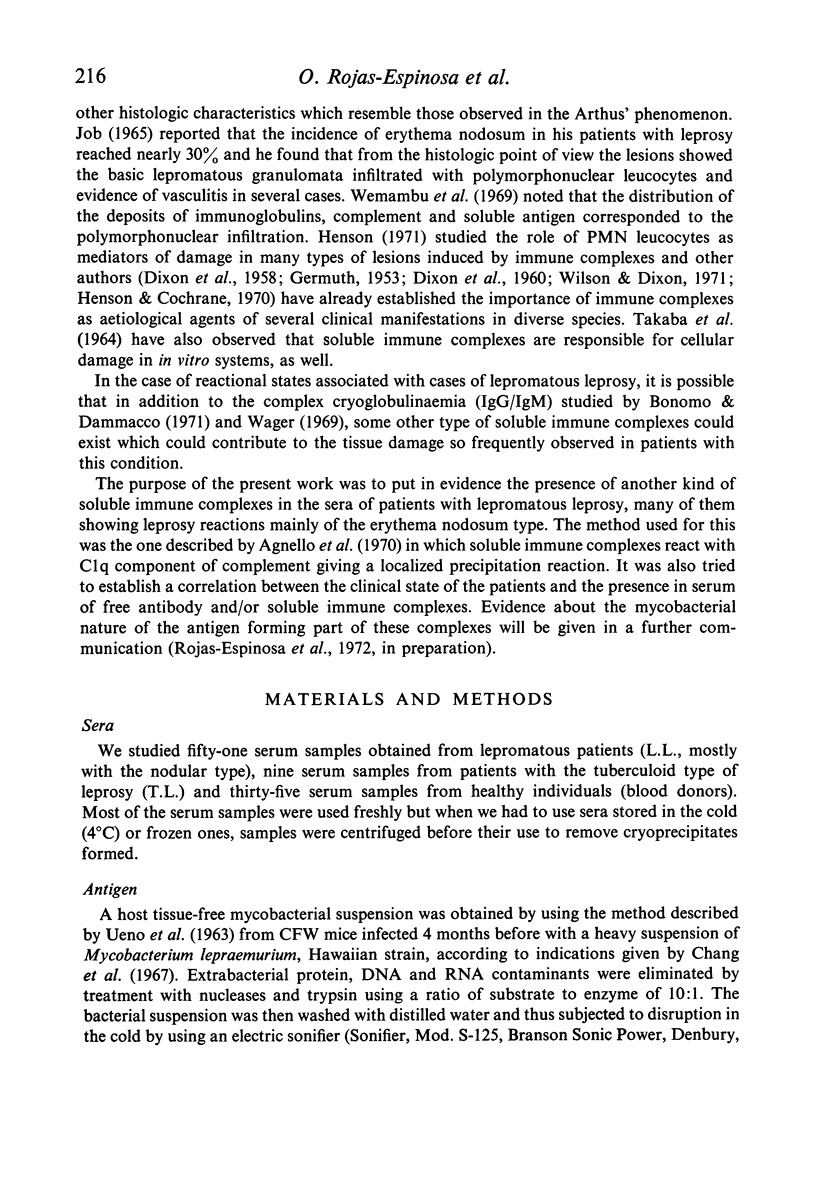
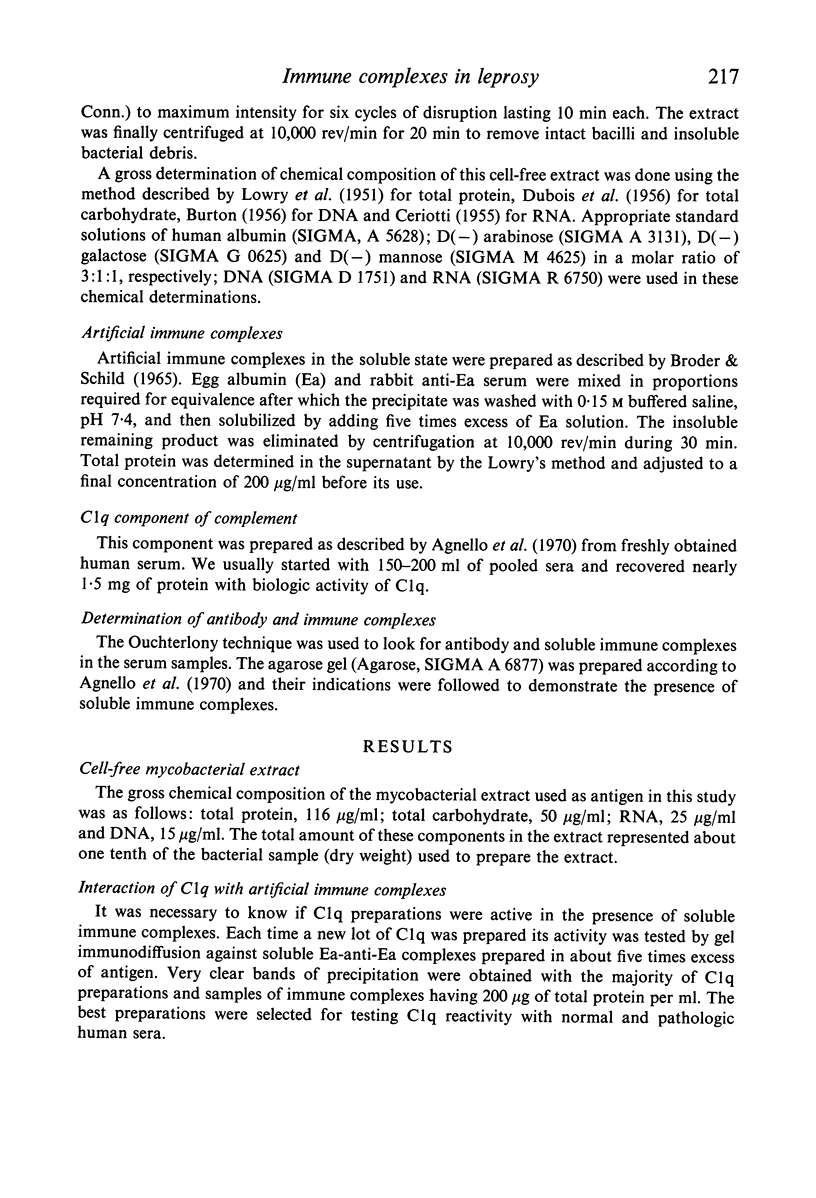
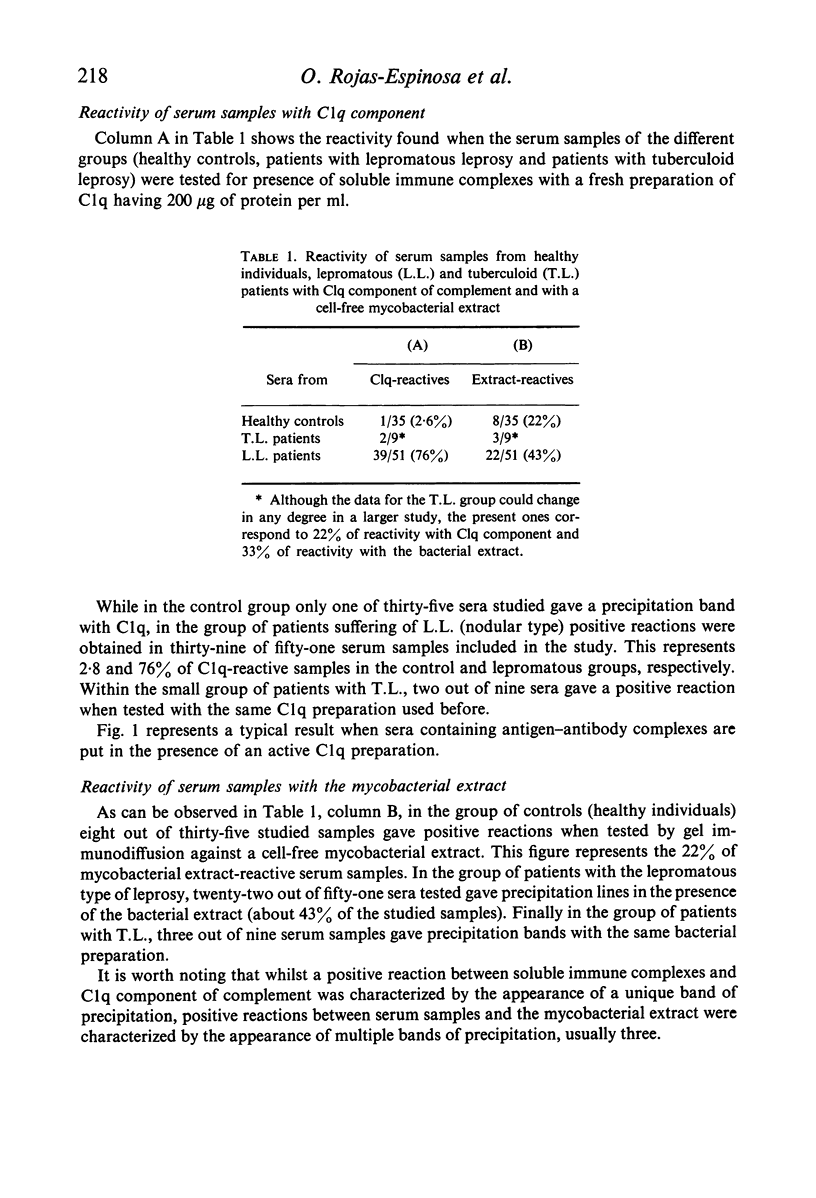
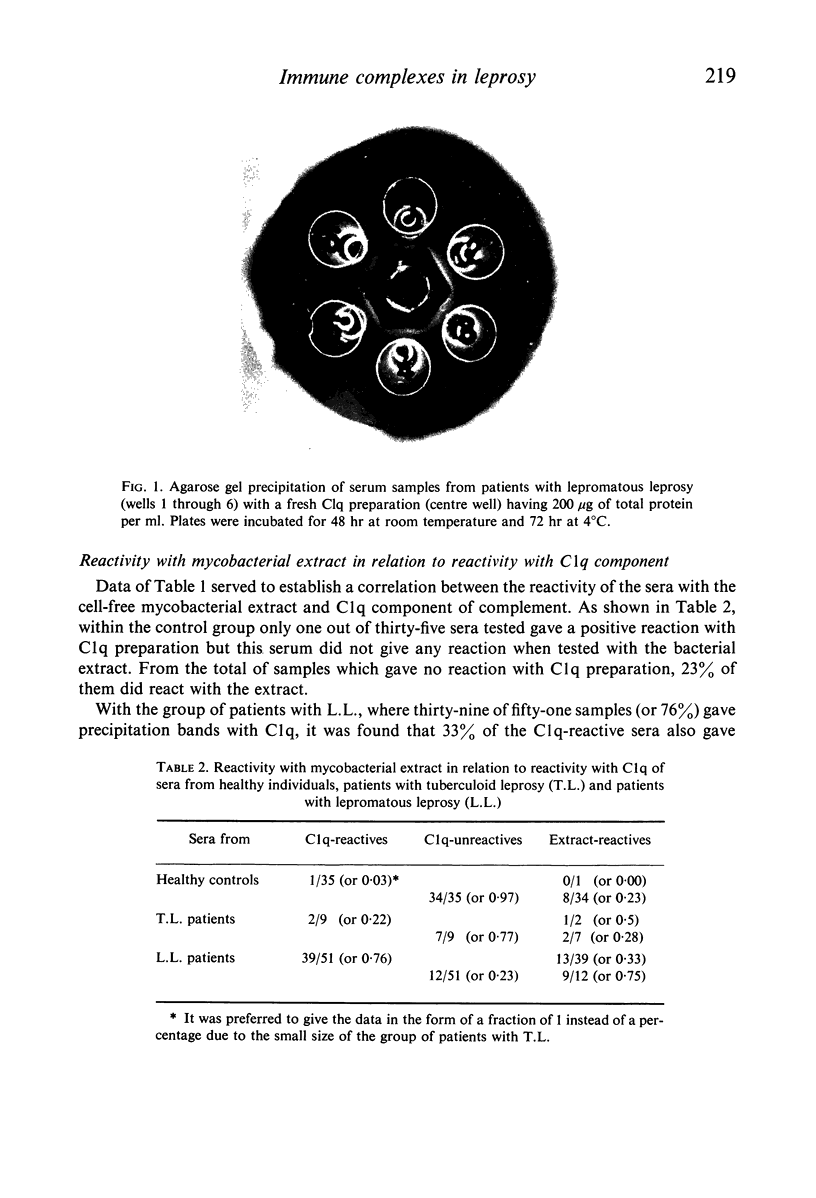


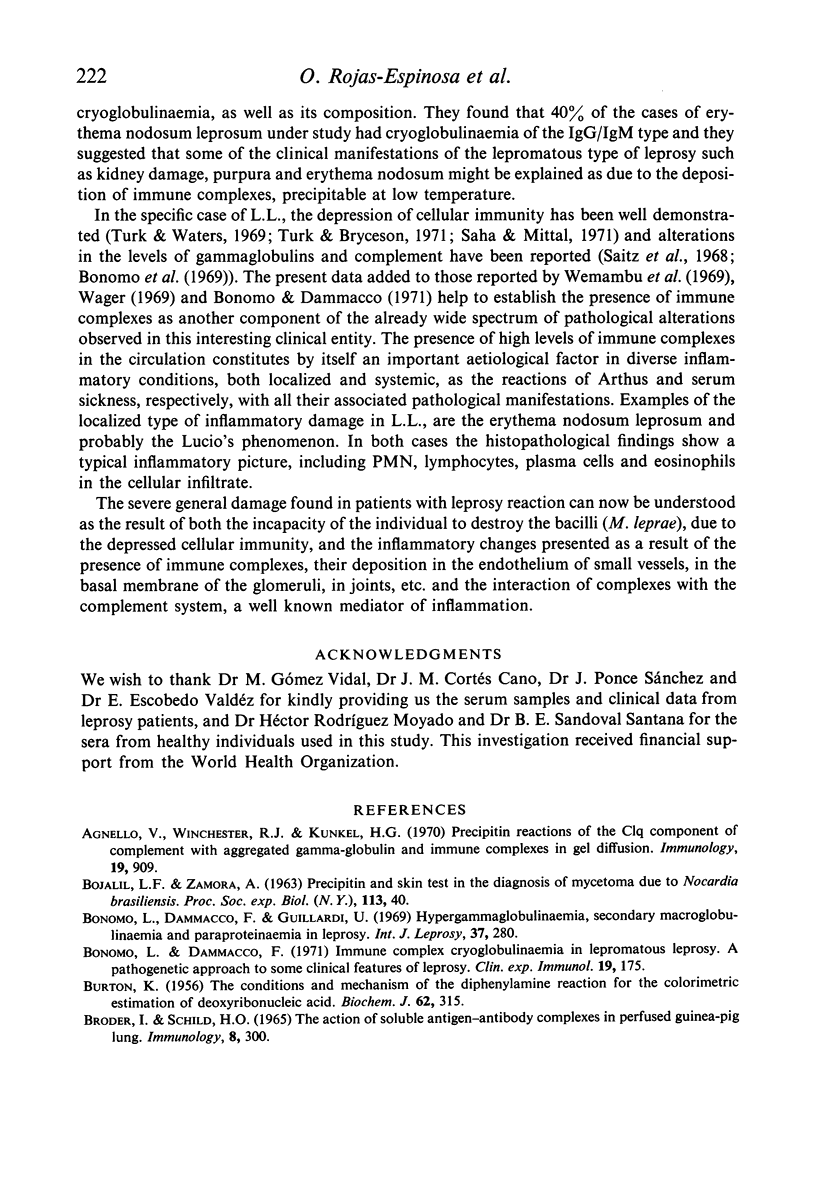

Images in this article
Selected References
These references are in PubMed. This may not be the complete list of references from this article.
- Agnello V., Winchester R. J., Kunkel H. G. Precipitin reactions of the C1q component of complement with aggregated gamma-globulin and immune complexes in gel diffusion. Immunology. 1970 Dec;19(6):909–919. [PMC free article] [PubMed] [Google Scholar]
- BRODER I., SCHILD H. O. THE ACTION OF SOLUBLE ANTIGEN--ANTIBODY COMPLEXES IN PERFUSED GUINEA-PIG LUNG. Immunology. 1965 Mar;8:300–318. [PMC free article] [PubMed] [Google Scholar]
- BURTON K. A study of the conditions and mechanism of the diphenylamine reaction for the colorimetric estimation of deoxyribonucleic acid. Biochem J. 1956 Feb;62(2):315–323. doi: 10.1042/bj0620315. [DOI] [PMC free article] [PubMed] [Google Scholar]
- Bonomo L., Dammacco F., Gillardi U. Hypergammaglobulinemia, secondary macroglobulinemia and paraproteinemia in leprosy. Int J Lepr Other Mycobact Dis. 1969 Jul-Sep;37(3):280–287. [PubMed] [Google Scholar]
- Bonomo L., Dammacco F. Immune complex cryoglobulinaemia in lepromatous leprosy: a pathogenetic approach to some clinical features of leprosy. Clin Exp Immunol. 1971 Aug;9(2):175–181. [PMC free article] [PubMed] [Google Scholar]
- Browne S. G. The variegated clinical pattern of leprosy. Int J Lepr. 1965 Jul-Sep;33(3 Suppl):400–403. [PubMed] [Google Scholar]
- CERIOTTI G. Determination of nucleic acids in animal tissues. J Biol Chem. 1955 May;214(1):59–70. [PubMed] [Google Scholar]
- Change Y. T., Andersen R. N., Vaituzis Z. Growth of Mycobacterium lepraemurium in cultures of mouse peritoneal macrophages. J Bacteriol. 1967 Mar;93(3):1119–1131. doi: 10.1128/jb.93.3.1119-1131.1967. [DOI] [PMC free article] [PubMed] [Google Scholar]
- DIXON F. J., FELDMAN J. D., VAZQUEZ J. J. Experimental glomerulonephritis. The pathogenesis of a laboratory model resembling the spectrum of human glomerulonephritis. J Exp Med. 1961 May 1;113:899–920. doi: 10.1084/jem.113.5.899. [DOI] [PMC free article] [PubMed] [Google Scholar]
- DIXON F. J., VAZQUEZ J. J., WEIGLE W. O., COCHRANE C. G. Pathogenesis of serum sickness. AMA Arch Pathol. 1958 Jan;65(1):18–28. [PubMed] [Google Scholar]
- GERMUTH F. G., Jr A comparative histologic and immunologic study in rabbits of induced hypersensitivity of the serum sickness type. J Exp Med. 1953 Feb 1;97(2):257–282. doi: 10.1084/jem.97.2.257. [DOI] [PMC free article] [PubMed] [Google Scholar]
- Henson P. M., Cochrane C. G. Cellular mediators of immunological tissue injury. J Reticuloendothel Soc. 1970 Aug;8(2):124–138. [PubMed] [Google Scholar]
- Job C. K. An outline of the pathology of leprosy. Int J Lepr. 1965 Jul-Sep;33(3 Suppl):533–541. [PubMed] [Google Scholar]
- LOWRY O. H., ROSEBROUGH N. J., FARR A. L., RANDALL R. J. Protein measurement with the Folin phenol reagent. J Biol Chem. 1951 Nov;193(1):265–275. [PubMed] [Google Scholar]
- Reyes-Gómez P., Estrada-Parra S., Rojas-Espinosa O. Isolation of polysaccharides from tissues infected with Mycobacterium lepraemurium. Int J Lepr Other Mycobact Dis. 1968 Jan-Mar;36(1):60–63. [PubMed] [Google Scholar]
- Saha K., Mittal M. M. A study of cell mediated immunity in leprosy: changing trends in the immunological spectrum of the disease. Clin Exp Immunol. 1971 Jun;8(6):901–909. [PMC free article] [PubMed] [Google Scholar]
- Saitz E. W., Dierks R. E., Shepard C. C. Complement and the second component of complement in leprosy. Int J Lepr Other Mycobact Dis. 1968 Oct-Dec;36(4):400–404. [PubMed] [Google Scholar]
- TAKABA Y., KINUWAKI Y., HAYASHI H. CELLULAR DAMAGE BY SOLUBLE ANTIGEN-ANTIBODY COMPLEXES IN TISSUE CULTURE. Proc Soc Exp Biol Med. 1964 Apr;115:906–910. doi: 10.3181/00379727-115-29074. [DOI] [PubMed] [Google Scholar]
- Turk J. L., Bryceson A. D. Immunological phenomena in leprosy and related diseases. Adv Immunol. 1971;13:209–266. doi: 10.1016/s0065-2776(08)60185-6. [DOI] [PubMed] [Google Scholar]
- Turk J. L., Waters M. F. Cell-mediated immunity in patients with leprosy. Lancet. 1969 Aug 2;2(7614):243–246. doi: 10.1016/s0140-6736(69)90009-9. [DOI] [PubMed] [Google Scholar]
- Wager O. Immunological aspects of leprosy with special reference to autoimmune diseases. Bull World Health Organ. 1969;41(6):793–804. [PMC free article] [PubMed] [Google Scholar]
- Wemambu S. N., Turk J. L., Waters M. F., Rees R. J. Erythema nodosum leprosum: a clinical manifestation of the arthus phenomenon. Lancet. 1969 Nov 1;2(7627):933–935. doi: 10.1016/s0140-6736(69)90592-3. [DOI] [PubMed] [Google Scholar]



